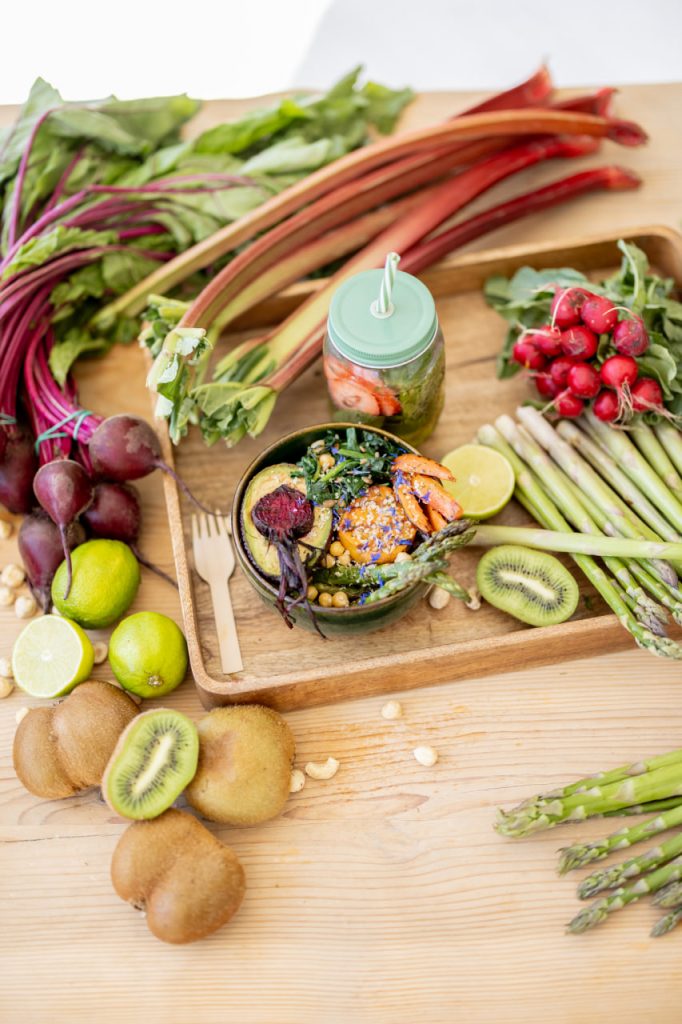The health food space is no longer a niche—it’s a global movement. In 2025, consumers aren’t just looking for low-calorie or sugar-free products; they’re seeking nutrition that supports longevity, mental clarity, digestive health, and sustainability. Brands that want to stay relevant must keep up with the evolving demands of today’s informed, conscious eaters.
Here are five key nutrition trends that are shaping the food industry in 2025—and how you can adapt your healthy product line to meet them.
1. Gut Health Goes Mainstream
The microbiome is now front and center in wellness culture. What began as a probiotic yogurt boom has evolved into a much deeper understanding of gut-brain connection, immunity, and inflammation.
What’s trending:
- Prebiotic fibers like inulin, chicory root, and green banana flour
- Fermented ingredients (kimchi powders, kefir blends, fermented herbs)
- Synbiotic formulations combining probiotics + prebiotics
- Gut-friendly claims backed by science and clear labeling
How to apply it:
Build your products with digestive wellness in mind—use natural fibers, reduce gut irritants (like gums or artificial sweeteners), and consider adding functional ferments for flavor and benefit.
2. Plant-Based Evolves Beyond Substitution
Plant-based is no longer just about replacing meat—it’s about whole food integrity, global flavors, and nutritional balance. Consumers are looking for cleaner, more authentic sources of plant power.
What’s trending:
- Whole-ingredient proteins like lentils, chickpeas, fava beans
- Seaweed, algae, and mycelium as new protein and mineral sources
- Less soy, more variety in protein blends
- Cultural inspiration from Asian, African, and Mediterranean cuisines
How to apply it:
Think beyond “plant-based burgers.” Consider functional snacks, bars, bowls, and spreads that spotlight plant nutrition in a fresh, honest way—without over-processing.
3. Sugar Reduction Gets Smarter
Low-sugar isn’t enough—consumers now care about blood sugar stability, glycemic index, and hormonal impact. The days of hiding behind stevia are fading.
What’s trending:
- Naturally sweet fibers like allulose and IMO
- Date, fig, and prune pastes as whole-fruit sweeteners
- Balancing sweet with acid and spice (like chili mango or lemon ginger)
- Pairing sweets with functional benefits (adaptogens, protein, healthy fats)
How to apply it:
Design your sweet products to offer more than taste. Consider how each bite affects energy, focus, and cravings. And educate your customers on why you chose the sweetener you did.
4. Personalized & Functional Nutrition
Consumers are increasingly building their diets around how they feel, not just the food pyramid. Customization, functionality, and holistic benefit are the new baseline.
What’s trending:
- Adaptogens for stress, mood, and hormone regulation (ashwagandha, maca, rhodiola)
- Nootropics for focus and clarity (L-theanine, lion’s mane, ginseng)
- Collagen and plant omegas for skin and joints
- “Mood foods” with magnesium, B-complex, and serotonin support
How to apply it:
You don’t need to make medicine—but your food can have a purpose. Design functional SKUs that help people manage energy, stress, or sleep naturally.
5. Transparency & Sustainability Are Non-Negotiable
Today’s health-conscious buyers are just as concerned about where their food comes from as they are about what’s inside. Ethics, environment, and sourcing are now part of the nutrition conversation.
What’s trending:
- Upcycled ingredients (like spent grain, coffee cherry, or fruit pulp)
- Regenerative agriculture as a brand story
- Carbon labeling and environmental impact data
- Local and seasonal sourcing tied to product positioning
How to apply it:
Use storytelling to differentiate your brand. Share your sourcing partners, sustainability goals, and ingredient journeys. Transparency is not just a trend—it’s trust.

